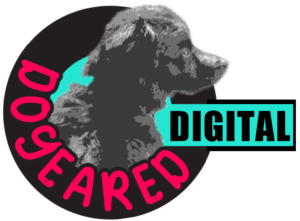Marketing budgets come in all sizes, but impact stems from strategy over pure dollar amounts. How can companies optimize spending to drive results at any level? Here we explore how B2B and B2C organizations may strategically allocate budgets to maximize return. Before we jump in, it’s important to keep in mind that marketing strategies perform differently across industries, so your ROI can vary depending on a number of factors. And if you’re just getting started, remember that these marketing strategies are more about long-term growth, so it may take a while to see your results truly scale. So don’t lose hope! With that, let’s get started.
$5,000 Budget
B2B Businesses
A budget of $5,000 might seem small, but for emerging B2B companies, especially in the SaaS or consultancy sectors, it’s a realistic starting point for meaningful marketing activities.
| Marketing Channel | Budget Allocation |
|---|---|
| LinkedIn Ads | $2,500 |
| Email Marketing | $1,500 |
| Content Marketing | $1,000 |
Implementation & Justification
- LinkedIn Ads:
- Implementation: Use Sponsored Content aimed at decision-makers within your target industries. Use the ad to direct traffic to a landing page with a strong CTA. Make sure to set up conversion tracking to measure ROI effectively.
- Justification: LinkedIn is a goldmine for B2B companies due to its professional user base. Allocating half of your budget here makes sense due to the high-quality leads you can acquire.
- Email Marketing:
- Implementation: Start by building a list through LinkedIn or website sign-ups. Use this list to initiate a drip email campaign, aiming to move leads down your funnel. Use tracking software to measure open rates and conversions.
- Justification: Email marketing provides an excellent ROI in the B2B sector. It’s a less intrusive form of marketing and allows for better audience segmentation.
- Content Marketing:
- Implementation: Create valuable, SEO-optimized blog posts that answer common questions in your industry. Promote these posts through your other channels.
- Justification: Content marketing helps in establishing your brand as an industry expert.
B2C Businesses
For a B2C business, especially e-commerce or localized services, $5,000 can go a long way in establishing an initial customer base.
| Marketing Channel | Budget Allocation |
|---|---|
| Facebook Ads | $2,000 |
| Google Ads | $1,500 |
| Influencer Marketing | $1,500 |
Implementation & Justification
- Facebook Ads:
- Implementation: Use targeted ads to promote your product to specific demographics. Employ carousel ads to showcase multiple features or products. Always include a compelling CTA.
- Justification: Facebook’s advanced targeting options are a boon for B2C businesses. This justifies allocating 40% of the budget to this platform.
- Google Ads:
- Implementation: Use Google Ads to target high-intent keywords relevant to your product. Use ad extensions to provide additional information like contact details or promotions.
- Justification: High-intent keywords can directly result in sales, making Google Ads a potent tool in your arsenal.
- Influencer Marketing:
- Implementation: Partner with micro-influencers who align with your brand. Have them promote your product in a natural, organic manner.
- Justification: Influencer marketing can provide a good ROI while enhancing brand trust. It’s also a great way to reach niche communities.
$25,000 Budget
B2B Businesses
For a B2B enterprise with a $25,000 budget, the focus starts to shift towards a more diversified, yet still targeted, marketing strategy that can include higher-tier marketing channels and sophisticated tactics.
| Marketing Channel | Budget Allocation |
|---|---|
| LinkedIn Ads | $10,000 |
| Email Marketing | $5,000 |
| Content Marketing | $4,000 |
| SEO | $3,000 |
| Webinars | $3,000 |
Implementation & Justification
- LinkedIn Ads:
- Implementation: Add LinkedIn dynamic ads and retargeting campaigns to your previous Sponsored Content. These can be more targeted and thus can drive higher-quality leads.
- Justification: LinkedIn is a high-value channel, especially for lead generation in B2B markets.
- Email Marketing:
- Implementation: Incorporate advanced A/B testing, and consider using machine learning algorithms to better predict which leads are most likely to convert.
- Justification: The ROI for email marketing is often very high, especially when advanced tactics are applied.
- Content Marketing:
- Implementation: Produce in-depth industry reports or whitepapers that can be used as lead magnets.
- Justification: Higher-value content can attract higher-value leads, making the channel worth the increased budget allocation.
- SEO:
- Implementation: Invest in advanced tools to better understand your keyword positioning and to uncover new keyword opportunities.
- Justification: Organic search traffic is highly valuable and often results in lower customer acquisition costs.
- Webinars:
- Implementation: Partner with an industry influencer to co-host a webinar.
- Justification: Webinars allow for deep engagement with potential clients and can serve as an additional lead generation tool.
B2C Businesses
A $25,000 budget allows a B2C business to explore further channels and to optimize and scale the existing ones. With this budget, you can focus on enhancing customer loyalty while aggressively pursuing new markets.
| Marketing Channel | Budget Allocation |
|---|---|
| Facebook Ads | $8,000 |
| Google Ads | $6,000 |
| Influencer Marketing | $4,000 |
| Email Marketing | $4,000 |
| SMS Marketing | $3,000 |
Implementation & Justification
- Facebook Ads:
- Implementation: Integrate carousel ads, dynamic product ads, and run retargeting campaigns to capitalize on past visitor data.
- Justification: As you scale, you’ll want to get more sophisticated with your Facebook ad strategies to sustain growth.
- Google Ads:
- Implementation: Start employing Google Shopping Ads and localized keywords for your campaigns.
- Justification: Google Ads offer a significant ROI, especially when targeting buying intent keywords.
- Influencer Marketing:
- Implementation: Consider a long-term partnership with an influencer or employ a group of micro-influencers for a campaign.
- Justification: Continuity can lead to better brand recall, hence the increased budget.
- Email Marketing:
- Implementation: Introduce triggered emails based on user behavior, like cart abandonment or repeat purchase.
- Justification: Email continues to offer an excellent ROI, especially when it’s personalized and triggered by behavior.
- SMS Marketing:
- Implementation: Send promotional texts or exclusive offers to engaged customers.
- Justification: Texts have a high open rate, making this an excellent channel for time-sensitive offers.
$50,000 Budget
B2B Businesses
With a $50,000 budget, a B2B enterprise can achieve significant reach and engagement. This budget allows for more refined and targeted strategies, such as account-based marketing, that can move the needle substantially in terms of revenue and growth.
| Marketing Channel | Budget Allocation |
|---|---|
| LinkedIn Ads | $15,000 |
| Email Marketing | $10,000 |
| Content Marketing | $8,000 |
| SEO | $7,000 |
| Webinars | $5,000 |
| Account-Based Marketing | $5,000 |
Implementation & Justification
- LinkedIn Ads:
- Implementation: Add LinkedIn Lead Gen Forms to capture high-quality leads directly within the platform.
- Justification: As your budget increases, scaling up on LinkedIn can yield high-quality B2B leads, justifying the highest allocation.
- Email Marketing:
- Implementation: Leverage advanced automation features to segment your audience better and to deliver more personalized content.
- Justification: With a larger budget, you can optimize for conversions even further, making this channel a significant ROI driver.
- Content Marketing:
- Implementation: Develop long-form content like e-books, or even consider starting a podcast.
- Justification: Content is king in the B2B world; it helps position your brand as a thought leader.
- SEO:
- Implementation: Implement a backlink strategy to improve your domain authority and rankings.
- Justification: A solid SEO strategy can provide a high long-term ROI, making it worth the investment.
- Webinars:
- Implementation: Leverage webinars for high-level discussions or product demonstrations to key stakeholders.
- Justification: They are highly effective for lead qualification and customer engagement in the B2B sector.
- Account-Based Marketing:
- Implementation: Focus on targeting specific high-value accounts with personalized campaigns.
- Justification: ABM can yield a high ROI due to the targeted nature of its campaigns, focusing on quality over quantity.
B2C Businesses
With $50,000 at your disposal, a B2C enterprise can aim for market domination. You can focus not just on acquisition but also retention, employing strategies that ensure sustainable growth.
| Marketing Channel | Budget Allocation |
|---|---|
| Facebook Ads | $15,000 |
| Google Ads | $12,000 |
| Influencer Marketing | $8,000 |
| Email Marketing | $8,000 |
| SMS Marketing | $4,000 |
| Affiliate Marketing | $3,000 |
Implementation & Justification
- Facebook Ads:
- Implementation: A/B test different audience segments, creatives, and offers to optimize your ad performance.
- Justification: At this scale, you’ll want to fine-tune every aspect of your Facebook campaigns to ensure maximum ROI.
- Google Ads:
- Implementation: Use dynamic search ads and employ AI-driven bidding strategies.
- Justification: Google’s AI algorithms can drive significantly higher ROI when you’re operating at this scale.
- Influencer Marketing:
- Implementation: Engage with multiple influencers or go for a celebrity endorsement.
- Justification: A higher budget allows for influencers with larger followings, increasing reach and potential ROI.
- Email Marketing:
- Implementation: Utilize advanced retargeting and personalization features.
- Justification: Higher budgets allow for more sophisticated strategies that can increase customer engagement and conversions.
- SMS Marketing:
- Implementation: Utilize it for flash sales and exclusive deals, targeting high-value customers.
- Justification: The high open rates in SMS marketing make it a valuable channel for time-sensitive offers.
- Affiliate Marketing:
- Implementation: Develop a structured affiliate program to encourage more users to promote your product.
- Justification: Affiliate marketing can be a cost-effective way to drive high-intent traffic to your site.
Average ROI of Marketing Channels
- LinkedIn Ads: The average ROI of marketing efforts on LinkedIn is 17.6.
- Facebook Ads: The average ROI of Facebook ads ranges from 2:1 to 5:1, depending on factors such as target audience, budget, and the conversion rate of your website.
- Google Ads: An Economic Impact report from Google estimates that the ROI of Google Ads is 800%.
- Email Marketing: The average ROI of email marketing is $36 for every $1 invested.
- SMS Marketing: Because text messages have a relatively high open rate, SMS marketing can have an ROI of up to 2,155%.
- Influencer Marketing: Influencer marketing campaigns have an average ROI of $5.20 for every $1 invested.
- Content Marketing: The ROI of content marketing varies between industries, but the recommended benchmark for a good ROI is 500%.
- Affiliate Marketing: The average ROI for affiliate marketing campaigns is 12:1.
- SEO: While the ROI of SEO efforts depends on the industry and the type of campaign, the average ROI for SEO for e-commerce businesses is $2.75 for every $1 invested.
- Webinars: Webinars are an effective strategy for decreasing cost-per-lead, therefore yielding a positive ROI.
- Account-Based Marketing: 97% of marketing professionals report that account-based marketing yields a higher ROI of any other marketing initiative.
Final Thoughts
Strategic marketing budget allocation is crucial for your business’s success, regardless of whether you’re a startup or an established enterprise. Each budget level allows for certain strategies that can maximize ROI and foster growth. The key is to continuously measure, adjust, and most importantly, innovate. It’s not just about how much you spend, but also how wisely you spend. Assess and reassess to make your marketing budget truly impactful.

